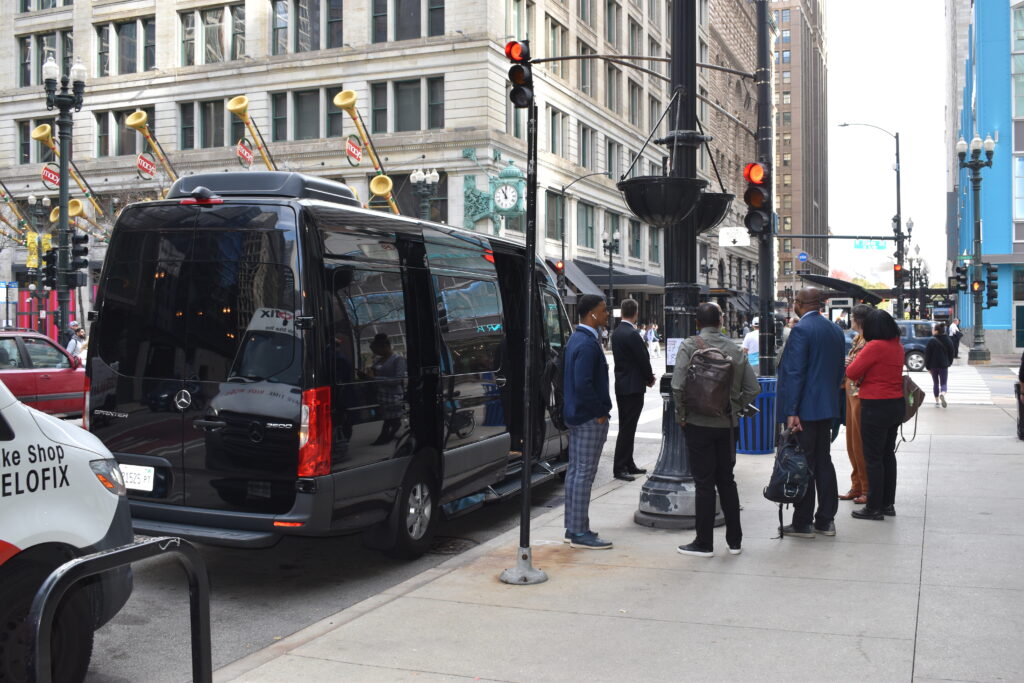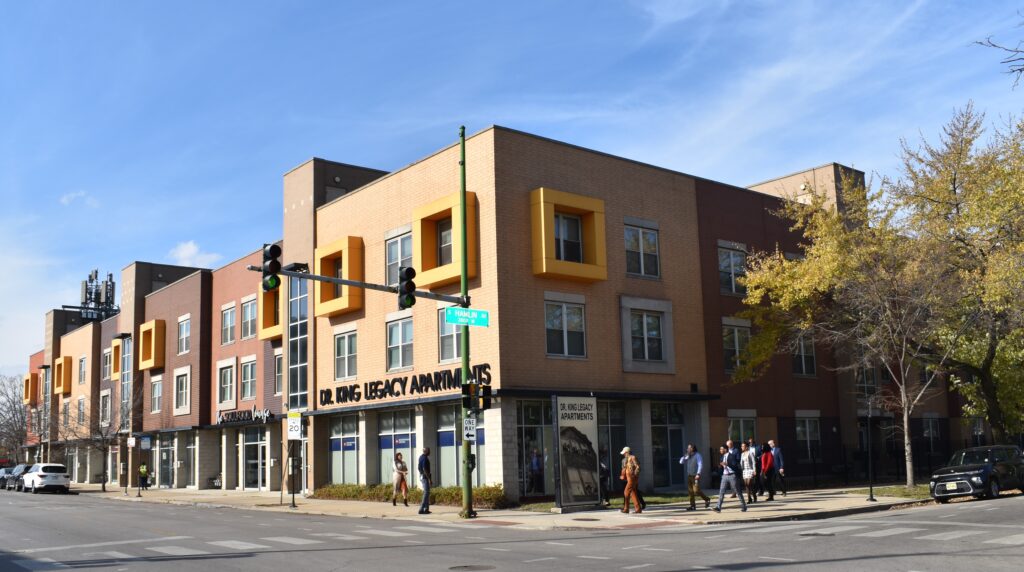
On an exceptionally warm day in November, CCLF hosted a group of engaged Tulsa, Oklahoma residents interested in creating a Community Development Financial Institution (CDFI) on a tour of community development projects financed by Chicago’s CDFI community. Chicago CDFI leaders hosting the group included Calvin Holmes, President, CCLF; Vickie Lakes-Battle, Executive Director – Chicago Metro Region, IFF; Kevin Sutton, Executive Director, Foundation for Homan Square; and Mary Fran Riley, Director of Community Relationships, Allies for Community Business.
The tour left downtown Chicago in the morning headed to its first stop, the Foundation for Homan Square where Kevin Sutton shared the history of the area that was once retail giant Sears’ original headquarters. He explained how Sears created a community, a city within a city. The retail behemoth dominated the retail landscape for decades and purchased land south of Garfield Park, along the railroad tracks at the cross section of Homan Avenue and Arthington Street on Chicago’s West Side. Nearly a million square feet of floor space was purchased for the merchandise building and a half block for office space.

This 55-acre property housed the Sears Catalog Facility, a 14-story office building that was the original ‘Sears Tower,’ and the coal-fired power plant that was the source of electricity to the Sears facilities. At its peak, the facility employed 22,000 workers.
The land was repurposed and is now the Homan Square community, the home of various holdings that include a community center, a high school, and more than 350 units of affordable housing.
The tour stopped next at the Martin Luther King Legacy Apartments located in the Lawndale community where Whittney Smith, Deputy Director, Lawndale Christian Development Corporation (LCDC), told of the time in 1966 when the Rev. Dr. Martin Luther King, Jr., his wife Coretta and their children stayed in Chicago and moved into 1550 S. Hamlin Street, a third-floor walkup apartment where they paid $90 per month for rent. King’s goal in moving to Chicago was to show the inequity in housing and to secure a commitment from Chicago mayor Richard J. Daley and other leaders to improve the housing stock in Black communities.


This historic site is phase one of a planned community developed by LCDC that includes a 45-unit rental property that has 6,000 feet of commercial space. Future plans include a library, new park, cultural center and a memorial to Dr. King.
Going just next door to the Soul Lounge, a restaurant financed by CCLF, the tour visited with owner Quintin Love to talk about his business and his role in the community along with Whittney Smith who discussed the CDFI ecosystem in Chicago.


The group continued to the North Austin Community Center (NACC) a 152,000 square foot community indoor and outdoor recreation facility in the North Austin Community that was financed with a $23.25 million of state and federal New Market Tax Credit (NMTC) allocation from BMO Harris, US Bank CDE, and Enhanced Capital. CCLF provided $4,452,545 of NMTC allocation to provide “flow-through” Qualified Low Income Community Investment (QLICIs) to a CCLF subsidiary for the facility.
The day ended with a meet and greet at The Hatchery, a food and beverage incubator and the home of Allies for Community Business (A4CB), where they chatted with other CDFIs about their organizations. In attendance were IFF, Community Investment Corporation, Neighborhood Housing Services of Chicago, Greenwood Archer, Allies for Community Business and CCLF.
The next day the Tulsa team was given breakfast and a formal presentation on CDFIs strategy, partnerships and technical assistance models before heading back to Oklahoma to dissect all the valuable information they received on their visit.